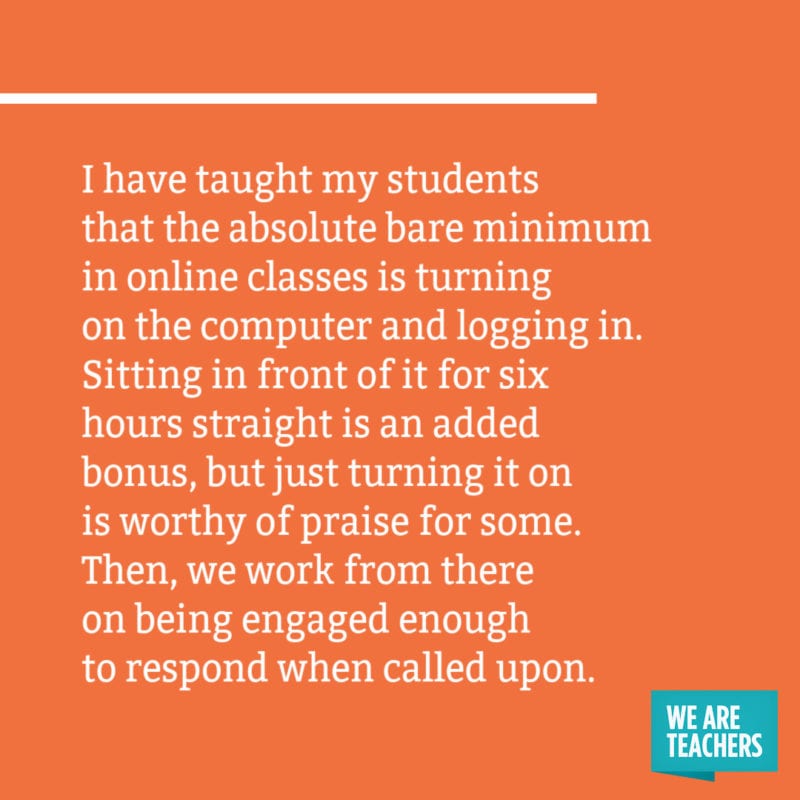To be a student during a global pandemic is to experience school—and life—like never before. Everything our students have ever been taught or prepared for for has shifted. When it comes to grading, I’ve quickly learned we can’t just do what we’ve always done.
A majority of my students have a low reading comprehension level. They struggled with books during “normal” times. Now they can barely keep it together. The overwhelming feeling of attempting to finish a paragraph is daunting enough, let alone an eight-page slide assignment.
Due to all these circumstances, I have had to make some pretty major changes to the way I grade. Here’s what grading looks like in my classroom.
How I’m grading on attendance
I have taught my students that the absolute bare minimum in online classes is turning on the computer and logging in. Sitting in front of it for six hours straight is an added bonus, but just turning it on is worthy of praise for some. Then, we work from there on being engaged enough to respond when called upon. If a student gives you absolutely no engagement, make note, and plan on contacting the student and potentially the parent if the student remains unresponsive.
Let your students know you appreciate them being there and give credit to those that do show up every single time.

[contextly_auto_sidebar]
How I’m grading on assignments
Grading has been a struggle this year. I’ll admit—at first I expected students to read something, re-write what they just read in their own words, and then remember it. That does not always work for the in-person learner, so why would it work online?
Many students have never liked school. They aren’t going to suddenly enjoy online classes because you designed the coolest virtual lesson. We must give them credit for effort as they could just as easily not show up.
In my classroom, in order to get full credit, students respond to the text via two on-topic statements or pictures for each paragraph. I model how to actively read texts by stopping and responding in boxes on a Google document after each paragraph. Alternatively, students can respond to the questions asked appropriately in the chatbox at least two times.

How I’m rethinking assignments altogether
One thing we’ve been working on in all my classes is typing. It’s not something I usually focus on, but it’s a pretty universal skill and my students need the practice. I’ve also been having students write in a daily journal to evaluate their understanding of the material and to regularly check in on their mental health. My suggestion is to ditch the the tests and spend a few days focusing on career opportunities, topics of their interest, and social-emotional learning to engage students and give yourself something for the grade book.
How are you getting creative grading during the pandemic? Share in the comments below.
Plus, why we need to stop expecting normal from our students.
For more articles like this, subscribe to our newsletters.

